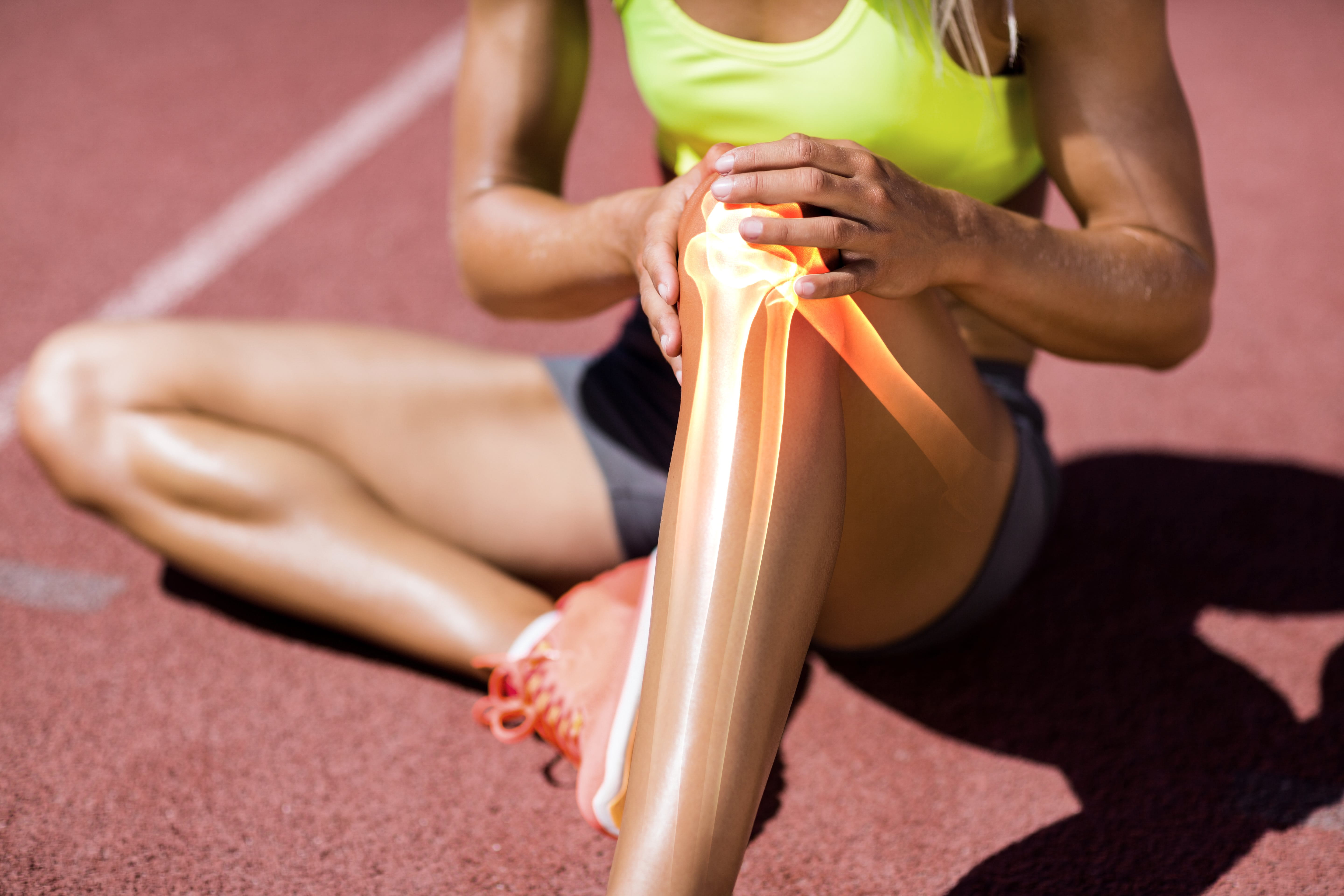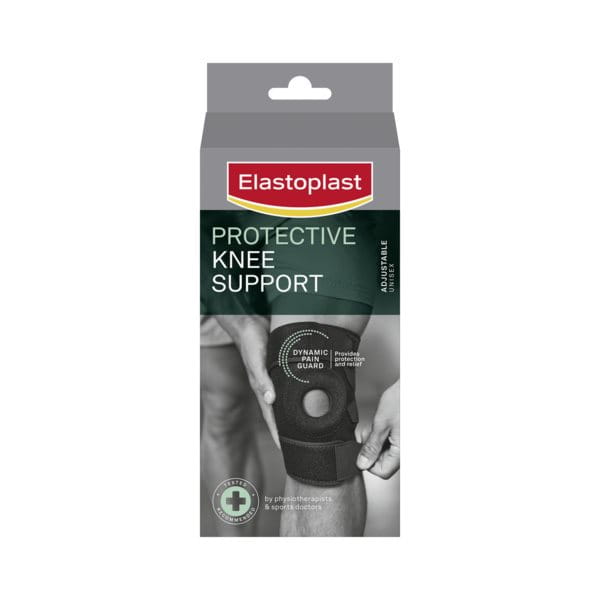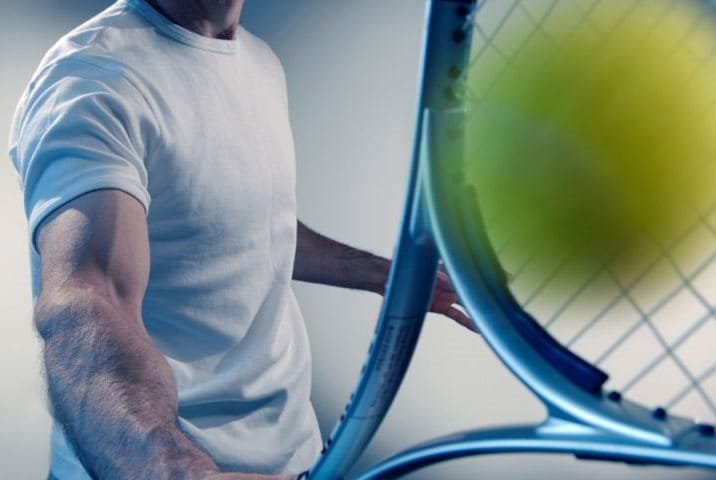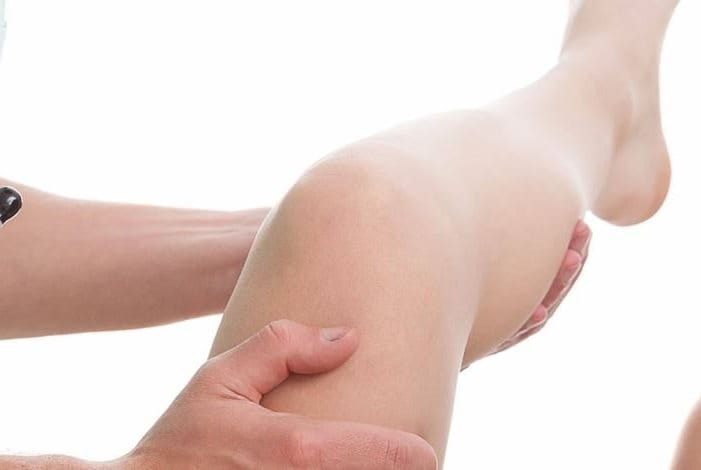Runner's knee, officially known as patellofemoral pain syndrome, is a condition that affects countless individuals engaged in running and other high-impact physical activities. "Runner's knee" is an umbrella term encompassing a range of discomforts and injuries associated with the patella, or kneecap, and the surrounding area.
Here we’ll explain the symptoms and how you can treat runner’s knee, with recommended stretches and exercises. Learn more about general knee pain here.
Symptoms of runner's knee

While it predominantly causes trouble for runner's, those getting into running and those engaged in other sports, runner’s knee can also affect non-athletes.
Symptoms of runner's knee, or patellofemoral pain syndrome, can vary in severity and may include:
- Pain around or behind the kneecap (patella)
- Discomfort or aching sensation in the knee joint
- Pain worsens with activities that involve bending the knee, such as running, walking downhill, squatting, or climbing stairs
- Swelling or inflammation around the knee joint
- Stiffness or a feeling of tightness in the knee
- Clicking or popping sounds during knee movement
- Pain may worsen after prolonged periods of sitting or inactivity
- Gradual onset of symptoms, often developing over time rather than suddenly
- Weakness or instability in the knee joint
Causes of runner's knee
There are many factors that can cause runner's knee. Some studies suggest part of it is down to poor biomechanics. With the knee joint being so complex, if any of the ligaments, tendons or muscles are working unequally, the other attachments can cause the knee to overcompensate and strain.
Tight or weak quadricep muscles are one of these compromised biomechanics that can cause patellofemoral pain syndrome. Weak or imbalanced muscles surrounding the knee, particularly the quadricep, can cause strain on the kneecap as its ability to move correctly is limited.
Misalignment of ankles and hips can cause overcompensation on the patella (kneecap), meaning the bone shifts too far towards the inside of the outside of the knee again disrupting the ability of the correct mobility of the kneecap.
Other causes of runner's knee may include:
- Overuse or repetitive stress: Engaging in activities that involve repetitive knee bending, such as running, jumping, or squatting, without proper rest or recovery time can lead to irritation and inflammation of the patellofemoral joint.
- Incorrect training techniques: Poor running or exercise form, sudden increases in training intensity or volume, improper footwear, or inadequate warm-up and stretching routines can contribute to the development of runner's knee.
- Traumatic injury: A direct blow or trauma to the knee, such as a fall or impact, can cause damage to the patellofemoral joint and result in pain and inflammation.
- Weight: Being overweight can put too much pressure on your joints and can contribute to patellofemoral pain syndrome.
- Feet and ankle issues: Flat feet, high arches, or hypermobile ankle joints may affect the way you walk, which can in turn affect the knees.
Treatment for runner's knee
There are numerous ways to treat runner's knee by changing activities, using proper recovery techniques, and using knee-strengthening exercises. It is important to visit a specialist, such as a physiotherapist, for an official diagnosis and information about the process to improve knee pain.
These cause less stress and tension in the knee joints and will help develop strength and stability that, with time, will help lessen the effects of runner's knee.
Runner’s knee recovery
If you are suffering from knee pain immediately after exercise the best way to start the recovery process is using the famous and reliable RICE method:
- Rest: The first step rest the injured area. Avoid activities that exacerbate pain or further damage the affected area.
- Ice: Applying ice to the injured area is beneficial for reducing pain, inflammation, and swelling.
- Compression: Applying compression to the injured area helps to control swelling and provide support. Compression can be achieved by using an elastic bandage or compression wrap to firmly cover the affected area, but not too tightly.
- Elevation: Elevating the injured area above the level of the heart can help reduce swelling by allowing excess fluid to drain away from the injured site.
Using a runner’s knee support, like the Elastoplast Performance Support, can help provide relief to the area. With its Dynamic Guard Technology, it actively supports recovery providing advanced flexibility and stabilising support.
Stretches and exercises for runner's knee
There are a multitude of exercises and stretches you can do to alleviate the symptoms of patellofemoral pain syndrome and build up strength in the joint to prevent runner's knee:
- Quadriceps Strengthening Exercises
- Hamstring Strengthening Exercises
- Gluteal Strengthening Exercises
- Hip Abductor Strengthening Exercises
- Calf Raises
- Straight Leg Raises
- Step-Ups
- Wall Sits
- Clamshells
- IT Band Stretches
- Hamstring Stretches
- Quadriceps Stretches
- Calf Stretches
- Hip Flexor Stretches
How long does runner's knee last?
Runner’s knee varies in duration based on factors like severity and treatment. In mild cases, where early intervention, rest, and appropriate exercises are followed consistently, recovery can occur in as little as a few weeks. More complex cases, involving moderate to severe symptoms, might require several months of dedicated rehabilitation, including strengthening exercises and modifying activity.
Ways to prevent runner's knee
There are a few ways to prevent and reduce the likelihood of developing runner's knee:
- Wear a brace or knee support: Knee supports provide strength and protection for weak, injured or stiff joints and are perfect for an active recovery.
The Elastoplast Performance Knee Support provides stability and flexibility, helps to improve blood circulation, provides support for the active recovery of leg muscles and prevents further muscle damage.
Additionally, the Elastoplast Protective Knee Support has a dynamic pain guard which provides strength, protection and support to stiff, weak, painful or injured joints. It offers compression and support to relieve pain associated with joint pain, sprains, chronic instability and symptoms of overuse. - Use proper running shoes: Wearing shoes specifically designed for running with good shock absorption and significant support will help protect the knees from the high impact of running.
- Take care with your training regime: Make sure you exercise with the correct form, whether that is for weight-lifting or running. Also, if you are new to exercising or returning after a lay-off, be sure to increase your exercise levels of intensity.






